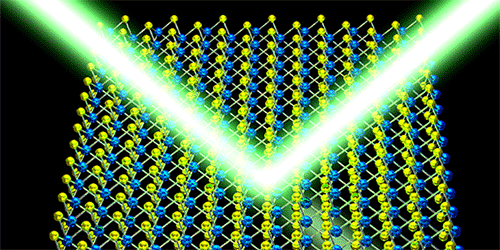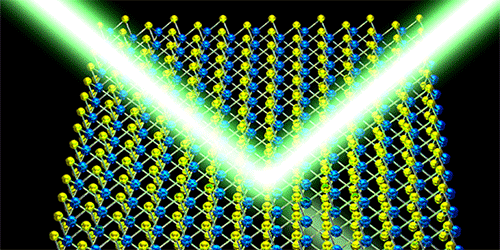Reflectivity of Ultrathin Mirror Switches with Voltage
Optoelectronic circuits, which use electricity to generate and send light signals, need lightweight mirrors whose reflectivity can be electronically controlled. Two independent research groups have now found a promising material for constructing such mirrors. The two teams measured the reflectivity of an atomically thin layer of molybdenum diselenide ( ) using laser light and found that they could tune the material’s reflectivity with an applied voltage.
has a naturally high reflectivity for a certain frequency of light. Light at this “resonant” frequency causes electrons to tightly bind to holes (“missing” electrons), forming quasiparticles called excitons. These excitons re-radiate light both forward and backward, and the backward light constructively interferes with the incident light, leading to high reflectivity.
To measure reflectivity, the researchers sandwiched the between two layers of hexagonal boron nitride, which helped the sample reflect light more effectively. Then they mounted this stack onto another material. Hongkun Park of Harvard University and colleagues chose silicon and achieved up to 85% reflectivity. By contrast, Atac Imamoğlu’s group at the Swiss Federal Institute of Technology (ETH) in Zurich chose fused silica and reached a reflectivity of 41%.
Because reflectivity depends on the number of excitons in a material, both groups found that they could change the reflectivity by tuning the material’s electron density. They achieved this by applying a voltage across the and the substrate, which makes the electron density rise or fall depending on the voltage’s polarity. Both teams showed that toggling this applied voltage on and off changed the reflectivity of the device by more than a factor of 2, meaning it could potentially be used as an optical switch.
This research is published in Physical Review Letters.
–Sophia Chen
Sophia Chen is a freelance writer based in Tucson, Arizona.





